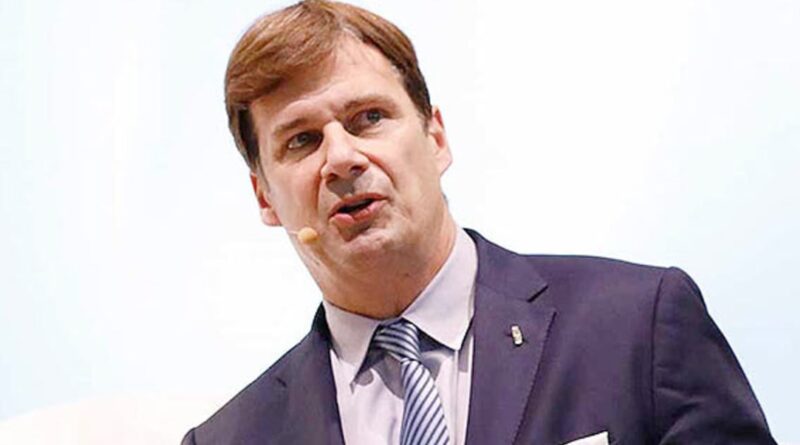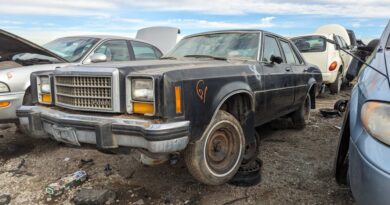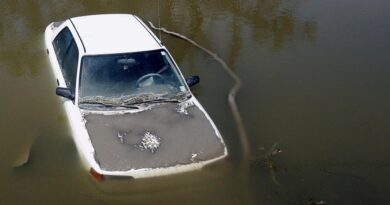Farley: Ford’s dysfunction has returned
DETROIT — Jim Farley has grand ambitions to transform Ford Motor Co., but the third-year CEO finds himself hampered by a problem that has vexed Ford leaders for decades: managing a massive company with a notoriously siloed — and sometimes dysfunctional — culture.
Next week marks one year since Farley split the automaker into separate divisions to accelerate what he calls a “dual transformation” of its traditional internal combustion business and its development of connected electric vehicles.
A year in, some parts of his plan are progressing faster than others.
“These huge transformations are not linear, perfectly predictable things,” Farley said last week.
He said he’s pleased by the reception to Ford’s first wave of EVs and connected-vehicle software but frustrated by long-standing cost and quality issues weighing down its business. He recently blamed dismal earnings in 2022 on poor operational execution.
Executive Chair Bill Ford said he’s seen these kinds of problems before.
“It’s been episodic for a lot of my career,” Ford said at a battery plant announcement last week. “We get it right, we slide back, we get it right. I think we probably had so much focus on the future that we perhaps took the eye off the ball a little bit on the present. But Jim’s got a full-court press on it, and we’re already starting to see results.”
Farley and CFO John Lawler last week said the company has an $8 billion cost disadvantage against its legacy rivals from inefficiencies in how it sources, designs and builds vehicles.
Farley said Alan Mulally, Ford’s CEO from 2006 to 2014, largely cleaned up internal dysfunction, but that it has since returned.
“We can cut the cost and the people and do it quickly,” Farley said. “But the reality is, if you don’t change the efficiency of engineering, supply chain and manufacturing — the way people work — it’ll grow back, because it did. It all grew back. My job as CEO is to make sure far after I’m gone that it doesn’t grow back.”
Lawler said about half of Ford’s financial disadvantage stems from higher material costs. Warranty issues, he said, are a $1 billion headache, although those costs were roughly flat last year compared with 2021.
Farley has promised solutions to Ford’s quality woes, but last week alone three new issues emerged: a multiweek halt to production and shipments of the F-150 Lightning after a battery fire; downtime at the Louisville Assembly Plant because of a software issue in preproduction models of the freshened Escape; and a stop sale affecting multiple nameplates with 10-speed automatic transmissions that could have a loose bolt.
Ford has issued the most U.S. recalls in the industry for the past two years, according to NHTSA.
In the future, the company intends to redesign its manufacturing process so vehicles have less content that assembly workers have to install, Farley said. He hopes to reduce the number of fasteners in a vehicle by half, he said, and move to larger castings with fewer parts, similar to Tesla.
But getting there has proven difficult.
“The prejudice is so high for how we’ve done things,” Farley said.
After a group within Ford called Team Edison created the Mustang Mach-E, Farley said it became “crystal clear” what he needed to do.
“Our prejudice will never get us to 8 percent [EV profit] margins,” he said. “We have to design the vehicle totally differently. We have to manufacture it, source it and sell it totally differently. That’s been a big transition.”
Bill Ford said he still has full confidence that Farley is the right person to figure out the automaker’s problems.
“I think this is the best leadership team in my memory,” he said. “Jim’s a fantastic CEO, and he’s put together kind of an all-star team, frankly.”
More than half the leadership team is new to the company since Farley took over in late 2020. Among his hires are Doug Field from Apple’s car project and Alan Clarke from Tesla.
Ford said Farley has been able to manage the company on a number of levels.
“Most CEOs either skew operationally or they skew strategically; Jim is both,” Ford said. “In my experience, that’s very rare. But he has a lot to do. He’s basically running three different businesses now.”
Ford said he believes splitting the company was the right decision and that Farley and his team need to continue moving quickly.
“Jim’s got a very hard job, probably the hardest job I’ve ever seen for a CEO,” Ford said. “But he’s also uniquely qualified to do it.”
The split among combustion, electric and commercial products comes with its own challenges, including keeping each team motivated. Morale took a hit last year after reports of impending layoffs suggested the traditional side of the business would bear the brunt of them. In the end, cuts were made in multiple units.
“I think culturally you always have to make sure that everybody feels they’re on equal footing, that there isn’t one favored part of the business versus another,” Ford said. “It’s something I spent a lot of time with Jim on because I’ve been through that earlier in my career, where if you weren’t in the new part of the business you were considered not an up-and-comer, and that’s devastating to the culture of the company. I think the team, the organization, is holding together. But there are always going to be whispers, and I get that. Every corporate culture has it. But Jim and his leaders have done a really good job making this an egalitarian venture.”
Field, who leads the EV division — called Ford Model e — under Farley, said he tries to keep both teams engaged by acknowledging their different work styles, since many in Model e came from newer, tech-focused companies that don’t operate like a legacy automaker.
“One of the principles is ‘don’t try and average,’ ” Field told Automotive News in late 2022 during a roundtable with some of Ford’s new hires. “Recognize these are people coming from different worlds, and what’s really hard is respect and acceptance of such different working styles. The worst thing we could do is average it and try to get everyone to come to some sort of middle. The magic happens when there is conflict, but it has to be respectful conflict.”
Lisa Drake, Ford’s vice president of EV industrialization, joined the Model e team after years of working on the traditional side of the business.
She said during the roundtable that bringing the two sides of the business together is “the hardest thing we do as leaders” but that most employees were excited about the opportunities.
“The hardest part is just the integration of it, and we’ve had our challenges in doing it,” she said. “It’s going to be tough, it’s going to be difficult. Not everybody will follow or want to follow, and that’s OK. You have to change. But our values will stay the same, and a lot of people are at Ford because of our values, not necessarily our culture. Once we move past this really difficult time, probably in the next few months … I think the team that’s sort of in place will be the team that delivers.”
Source : Autonews.com




